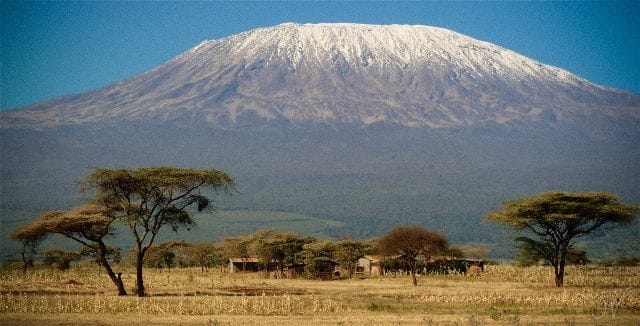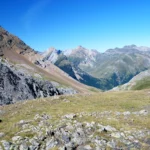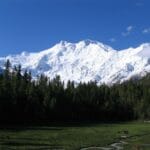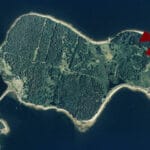Buckle up for an adventure into the heart of Africa, where Mount Kilimanjaro reigns supreme. This towering behemoth, shrouded in mystery and awe, has captivated travelers for centuries. Get ready to uncover the geological puzzle that formed its majestic slopes, unravel the linguistic secrets behind its name, and dive into the enigma surrounding this natural wonder. Join us as we ascend Kilimanjaro’s slopes, peeling back the layers of complexity and exploring the secrets that make this mountain one of the world’s most captivating destinations.
Fun Facts About Mount Kilimanjaro
Mount Kilimanjaro! The name alone evokes a sense of adventure, doesn’t it? But this African giant is more than just a mountain; it’s a treasure trove of fascinating facts. For instance, did you know that Kilimanjaro is essentially a family reunion of volcanoes? We’re talking three ancient volcanoes—Kibo, Mawenzi, and Shira—that have been huddled together for millions of years.
Imagine this: you’re climbing this massive mountain, surrounded by colossal ice caps. It’s a sight that inspires awe, but also a touch of concern. These icy giants have shrunk by a staggering 85% since 1912, a stark reminder of climate change’s impact on our planet.
Let’s step back in time to 1889. Picture Hans Meyer, an adventurous Austrian mountaineer, etching his name in history as the first person to successfully summit Kilimanjaro. It was a groundbreaking achievement in the world of mountaineering!
But Kilimanjaro is more than just rocks and ice. The Swahili people, who call this mountain home, have a beautiful name for it: “Mountain of Light.” It’s considered a sacred place, and when you witness how it rises majestically from the African plains, it’s easy to understand why.
Ready for some more fun Kilimanjaro facts?
- Speed Climbing, Anyone? While most people opt for a 6-8 day climb to soak in the views, some daring souls have raced to the summit in under 6 hours!
- A World Within a World: Kilimanjaro boasts an astounding variety of plants and animals. Over 3,000 plant species and 700 animal species thrive in the mountain’s unique microclimates.
- A Reminder from the Mountain: The melting ice caps on Kilimanjaro serve as a potent reminder of the urgent need to address climate change and protect our planet.
These are just a few of the many wonders that make Mount Kilimanjaro so special. It’s a place where the raw power and ethereal beauty of nature collide, a testament to the incredible diversity of our planet. And who knows, maybe one day you’ll have the chance to experience it for yourself!
What’s a Fun Fact About Mount Kilimanjaro?
We’ve already established that Kilimanjaro is an impressive mountain, standing tall and proud. But did you know that this majestic peak is actually a dormant volcano?
Don’t worry; “dormant” means it’s been quiet for a very long time. Think of it as a volcano taking a well-deserved nap. While it doesn’t necessarily mean it can’t wake up, it’s been slumbering peacefully for centuries.
This revelation adds another layer of intrigue to Kilimanjaro’s story, wouldn’t you agree? It suggests a hidden history, a fiery past lurking beneath its serene exterior. Who knows, maybe one day it’ll decide to put on a fiery show again. Until then, we can marvel at its majestic presence and the thought of the slumbering giant within.
How Old is Mount Kilimanjaro?
Mount Kilimanjaro’s presence is undeniably impressive, but have you ever wondered about its age? Scientists believe this majestic mountain has graced our planet for a remarkably long time—millions of years, to be precise!
Current estimates suggest that Mount Kilimanjaro is roughly 3.6 million years old. That means its formation began way back in the Pliocene era. And its creation was not a singular event. Mount Kilimanjaro has witnessed its fair share of volcanic eruptions throughout its long lifespan. These eruptions, while a thing of the past (for now, at least!), have played a significant role in shaping the mountain into the iconic landmark we recognize today.
This unique blend of ancient history, captivating geology, and diverse ecosystems is what draws adventurers and nature enthusiasts to Kilimanjaro’s slopes. Climbing to its summit is like embarking on a journey through time, witnessing firsthand the awe-inspiring power of nature’s artistry.
What is Unique About Mount Kilimanjaro?
We’ve already touched upon Mount Kilimanjaro’s grandeur, but let’s delve into what truly sets it apart from other mountains. This Tanzanian giant possesses a unique charm and a personality all its own.
Firstly, envision yourself at its base, gazing up at a natural wonder so colossal it seems to brush the heavens. That’s Kilimanjaro—the tallest freestanding mountain on Earth, soaring to a staggering 19,340 feet! To put that into perspective, it’s like stacking thirteen Empire State Buildings on top of each other. Talk about an awe-inspiring sight!
But Kilimanjaro is far more than just a pretty face. It offers a captivating journey through diverse worlds. As you ascend its slopes, you’re not merely gaining altitude, but traversing five entirely different ecosystems. You might begin your trek amidst lush rainforests, monkeys swinging through the canopy above, and find yourself surrounded by enchanting alpine meadows seemingly plucked from a fairytale. And if you’re fortunate enough to reach the summit? Prepare to be greeted by the stark beauty of glaciers! It’s like experiencing a microcosm of the world’s climates, all within the confines of a single mountain.
Here’s another intriguing tidbit: Kilimanjaro is actually a slumbering volcano. Fret not, it’s highly unlikely to erupt anytime soon (we hope!). Its last eruption occurred centuries ago, leaving behind volcanic cones and lava flows that are still visible today. Some scientists even keep a watchful eye on it, just in case it gets any restless urges.
Even giants face their share of challenges. Kilimanjaro’s iconic ice caps, those frosty crowns that have adorned its peak for millennia, are sadly shrinking. The culprit? You guessed it—climate change. It’s a poignant reminder of humanity’s impact on the planet, and some experts suggest that the mountain could lose its glaciers entirely within a few decades. This loss wouldn’t just affect the view; it would impact the delicate balance of the entire ecosystem and the water supply for those who depend on it.
For the communities living in Kilimanjaro’s shadow, it represents far more than just a mountain. It’s deeply intertwined with their history, beliefs, and daily lives. The Chagga people, for instance, believe their ancestors reside on the mountain, and the Maasai hold it sacred. It’s not difficult to comprehend why. Kilimanjaro, whose very name means “Mountain of Light” in Swahili, possesses an undeniable presence that evokes a sense of awe and reverence.
In essence, Kilimanjaro is a breathtaking tapestry of natural wonders, cultural significance, and scientific intrigue. It’s a mountain that whispers tales of bygone eras, a story that unfolds with every step you take on its slopes.
Why is Kilimanjaro Called Kilimanjaro?
We’ve explored Mount Kilimanjaro’s imposing height and how it dominates the African landscape, but have you ever pondered the origin of its name? It’s a question that has sparked curiosity for centuries, and the answer, like Kilimanjaro itself, is quite fascinating.
The most widely accepted explanation points to the fusion of Swahili and KiChagga, two languages spoken in the region. “Kilima” in Swahili translates directly to “mountain,” which makes perfect sense. The intriguing part lies in the word “Njaro.” Depending on who you ask, “Njaro” carries a couple of different potential meanings in KiChagga.
Some believe that “Njaro” translates to “whiteness.” This interpretation seems fitting when you envision Kilimanjaro’s snow-capped peak gleaming against the vibrant African sky. It’s a striking image, and the idea of this majestic mountain being named for its pristine crown is undeniably poetic.
However, there’s another theory surrounding the origin of “Njaro.” Some believe it could mean “we failed to climb it.” This interpretation hints at Kilimanjaro’s challenging nature, a mountain that has tested the limits of countless climbers throughout history. Even today, reaching its summit remains a feat that demands significant preparation, resilience, and a touch of grit.
The truth is, the precise origin of “Njaro” may forever remain a mystery. However, both interpretations offer a glimpse into the relationship between the mountain and the people who have coexisted in its shadow for generations. Whether Kilimanjaro represents breathtaking beauty or the humbling power of nature, its name continues to elicit a sense of awe and wonder in all who encounter it.
What is the Mystery of Mount Kilimanjaro?
We’ve delved into the wonders of Mount Kilimanjaro, but it’s important to note that there isn’t one overarching mystery surrounding it. Instead, it’s a collection of smaller, equally intriguing questions that contribute to Kilimanjaro’s allure. Questions like, why is it so tall? How did it acquire those remarkable glaciers when it’s practically on the equator?
You see, Kilimanjaro is classified as a stratovolcano, which essentially means it was formed by countless layers of volcanic material accumulating over millions of years. Volcanoes, in themselves, are captivating geological formations, but Kilimanjaro stands out because it managed to ascend to the roof of Africa, claiming the title of the tallest freestanding mountain on Earth!
And let’s not forget about those glaciers! It’s mind-boggling to think about ice and snow persisting on a mountain that’s practically sunbathing on the equator. Scientists are still unraveling the mysteries behind the formation of these glaciers and how they’ve managed to withstand the test of time. Some theories suggest that Kilimanjaro’s immense size and its influence on air currents create a unique microclimate, fostering the conditions necessary for glacial formation.
Then there are the stories passed down through generations. Local tribes have resided in Kilimanjaro’s shadow for centuries, weaving captivating tales about the mountain that are deeply rooted in their beliefs. These stories provide a valuable glimpse into their enduring relationship with this majestic giant.
But perhaps the greatest mystery of all lies in our innate fascination with Kilimanjaro. What is it about this mountain that draws us in? Is it the allure of conquering its challenging slopes? The opportunity to witness its diverse ecosystems, ranging from lush rainforests to stark, icy landscapes? Or could it be something more profound, a deep-seated yearning to connect with nature on a grand scale and test the limits of human endurance?
Whatever the reason, one thing remains certain: Mount Kilimanjaro will continue to inspire awe and ignite a sense of wonder in all who lay eyes upon it. It’s a place where scientific inquiry intersects with ancient legends, where natural beauty challenges human ambition, and where the spirit of adventure thrives. While there may not be a singular mystery to unravel, the pursuit of Kilimanjaro’s wonders is an adventure in itself, brimming with unique discoveries and captivating stories.
Was Kilimanjaro a Volcano?
Absolutely! Mount Kilimanjaro wasn’t always the towering, snow-capped peak we know and admire today. Its existence can be attributed to explosive beginnings—volcanic eruptions of epic proportions. Picture molten lava spewing into the air, gradually building up the mountain’s form over millions of years. Pretty incredible, right?
But these weren’t just any ordinary eruptions. Kilimanjaro’s formation involved three distinct volcanic cones, each with its own unique character: Kibo, Mawenzi, and Shira. Kibo, the highest peak, is what often comes to mind when people envision Kilimanjaro. It still retains its classic volcanic cone shape, even though it’s been dormant for a very long time.
Speaking of dormant, when was the last time this sleeping giant roared to life? Scientists believe the last major eruption occurred around 360,000 years ago—practically ancient history! However, there have been whispers of minor volcanic activity as recently as 200 years ago. Nothing too dramatic, but it serves as a reminder that even dormant volcanoes like to keep things interesting.
So, while you can likely leave the fire extinguisher at home for your Kilimanjaro climb, it’s fascinating to remember that beneath that serene, snow-capped exterior lies the heart of a once mighty volcano.
How High is Kilimanjaro?
We’ve discussed Kilimanjaro’s impressive stature, but let’s quantify that. Prepare to be amazed, because this colossal mountain reaches a breathtaking height of 19,341 feet above sea level! It’s like stacking ten Empire State Buildings on top of each other! This incredible altitude earns Kilimanjaro the prestigious title of the tallest freestanding mountain in the world—a true titan of the natural world.
Now, you might be wondering, what does “freestanding” mean in this context? Well, unlike mountain ranges that cluster together, Kilimanjaro stands alone, rising dramatically from the African plains like a solitary monarch surveying its domain.
But Kilimanjaro’s allure extends beyond its impressive height. It’s a mountain of many faces, quite literally! It’s actually comprised of three volcanic cones, each with its own unique story to tell. We have Kibo, the grand patriarch of the group and the highest of the three. Then there’s Mawenzi, slightly shorter but renowned for its rugged beauty and challenging climbs. And finally, we have Shira, the smallest of the trio, which has eroded over time to form a plateau that offers breathtaking panoramic views.
This diversity is not limited to Kilimanjaro’s peaks. As you journey from its base to its summit, you’d be forgiven for thinking you’d been transported to different planets! You might begin your trek in lush, humid rainforests teeming with life, only to find yourself in open moorlands bathed in the crisp mountain air. And as you ascend further, the landscape transforms into a stark, frozen alpine desert that seems to belong to another world. It’s this incredible variety that makes Kilimanjaro such a rewarding and captivating climb for adventurers hailing from all corners of the globe.
Why is Kilimanjaro so Hard to Climb?
You might assume that climbing a mountain without the need for ropes or specialized climbing gear would be relatively straightforward. However, Kilimanjaro has a few tricks up its sleeve. It’s not about technical difficulty, but rather a unique set of challenges that make it a true test of human endurance.
Firstly, imagine attempting to catch your breath when the air is so thin it feels like you’re sipping through a straw with a hole in it. That’s what it’s like at higher elevations on Kilimanjaro. The summit, Uhuru Peak, sits at a dizzying 19,340 feet above sea level! Altitude sickness is a very real concern, and it can manifest as headaches, nausea, and utter exhaustion.
And then there’s the weather—Mother Nature’s own unpredictable roller coaster. One moment you might be basking in glorious sunshine, and the next you’re shivering in freezing temperatures, battling howling winds, or seeking shelter from a sudden hailstorm. Packing for a Kilimanjaro climb is like trying to squeeze an entire wardrobe into a backpack, just in case.
Let’s not forget about the physical demands of the climb itself. Imagine trekking for days on end, hauling a backpack that feels as heavy as a small child, over uneven, rocky terrain. It’s a true test of physical and mental fortitude, even for the most seasoned hikers.
But perhaps the most significant challenge of all is acclimatization. It’s about befriending the mountain, gradually ascending to higher altitudes to allow your body to adjust to the thinner air. Skip this crucial step, and you’re essentially guaranteeing yourself a one-way ticket to Altitude Sicknessville—not a destination you want to visit.
So, while Kilimanjaro might not require the skills of a seasoned rock climber, it demands respect, meticulous preparation, and an unwavering sense of determination. It’s about listening to your body’s cues, adapting to the ever-changing elements, and embracing the journey one step at a time. The reward? Standing triumphant on the “Roof of Africa,” witnessing a view that will forever be etched in your memory.
Will Kilimanjaro Erupt Again?
We’ve touched upon Kilimanjaro’s explosive past, particularly that massive eruption 360,000 years ago that shaped its current form. But what about the future? Will this sleeping giant awaken from its slumber? It’s a question that sparks curiosity and a touch of apprehension, but unfortunately, there’s no easy answer.
Kilimanjaro’s last eruption occurred a mere 200 years ago—a blink of an eye in geological terms! This suggests that its youngest peak, Kibo, is merely taking a well-deserved nap…a really long nap. It’s important to remember that “dormant” does not equate to “extinct.” The potential for Kibo to rumble back to life still exists.
Think of it this way: imagine a dragon, slumbering peacefully beneath a mountain. You haven’t witnessed it breathe fire in a while, but you know it’s still down there, and you certainly wouldn’t want to provoke it. That’s Kibo—quiet for now, but with the latent power to roar back to life.
The good news is that scientists are diligently monitoring the situation. They employ sophisticated equipment to track earthquakes and gas emissions around the volcano, essentially monitoring the dragon’s vital signs for any changes that might suggest an impending eruption.
So, what are the expert opinions? Well, some believe that another eruption is certainly within the realm of possibility, while others maintain that it’s less likely to occur within our lifetime. The truth is, volcanoes are notoriously unpredictable. While scientists can use their knowledge of Kilimanjaro’s past behavior and current activity to make educated predictions, there’s no way to know for sure what the future holds.
This is where things get really exciting! Research on Kilimanjaro is ongoing, and new discoveries are constantly reshaping our understanding. Scientists are working tirelessly to unravel the mysteries happening beneath the surface. Who knows, maybe one day we’ll be able to predict volcanic eruptions with greater accuracy.
For now, we can appreciate the awe-inspiring beauty and raw power of this natural wonder while acknowledging that some mysteries are best left unsolved. If you’re planning a climb up Kilimanjaro, rest assured that the risks are being closely monitored, and you can focus on enjoying this once-in-a-lifetime experience.
How High is Kilimanjaro Compared to Everest?
We’ve established that both Kilimanjaro and Everest are impressive mountains, but let’s compare their heights.
Kilimanjaro, the king of Africa, proudly rises to a breathtaking 5,895 meters (19,341 feet). That’s taller than almost any other point on the African continent! It’s also what makes Kilimanjaro the tallest freestanding mountain in the world—quite an accolade!
Now, let’s turn our attention to Everest. Everest is in a league of its own, towering at an astounding 8,848.86 meters (29,031.7 feet)! That’s almost an entire Kilimanjaro stacked on top! It’s a whole different game, demanding a higher level of preparation, skill, and let’s be honest, a touch of audacity.
Here’s a handy table to illustrate the difference:
| Mountain | Height (meters) | Height (feet) |
|---|---|---|
| Mount Kilimanjaro | 5,895 | 19,341 |
| Mount Everest | 8,848.86 | 29,031.7 |
While both mountains promise incredible challenges and breathtaking views, it’s clear that Everest demands a whole other level of respect and experience.
Some people might wonder, why is Everest so much taller? Well, it all comes down to the powerful forces of plate tectonics that shape our planet. You see, Everest is a relative youngster in mountain terms, formed by the ongoing collision of the Indian and Eurasian tectonic plates. This ongoing clash is actually still pushing Everest higher, albeit very, very slowly.
Kilimanjaro, on the other hand, is a product of volcanic activity, formed by eruptions millions of years ago. While it’s no longer actively growing like Everest, its impressive height still inspires awe and wonder in all who behold it.
And remember that interesting fact about anesthesiologists? They’re not just putting people to sleep for surgeries! You can read more about other fun facts about anesthesiologists here: fun facts about anesthesiologists.
















1 thought on “Fun Facts About Mount Kilimanjaro”
Comments are closed.